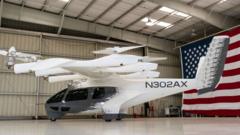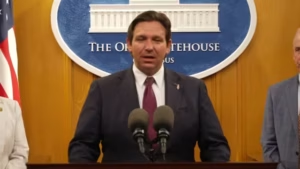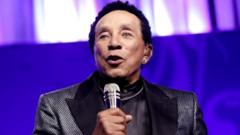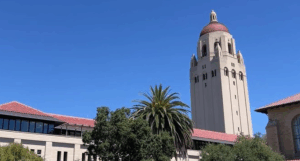As the countdown to the 2028 Los Angeles Olympics continues, plans have been unveiled for an air taxi service that could revolutionize how spectators travel between event venues.
**LA28 Olympics to Introduce Air Taxi Service for Spectators**

**LA28 Olympics to Introduce Air Taxi Service for Spectators**
Organizers aim to ease traffic woes with innovative flying taxi concept.
The LA28 committee has teamed up with Archer Aviation to roll out an air taxi service during the forthcoming Olympic and Paralympic Games. The service aims to allow spectators to fly over Los Angeles, avoiding the city's notoriously congested roadways. The announcement made headlines on Thursday, detailing plans for a fleet of electric vertical take-off and landing (eVTOL) aircraft.
While flying taxis have long been a dream for urban mobility, their commercial debut has faced setbacks. Archer Aviation, still awaiting certification from the U.S. Federal Aviation Administration (FAA), aims for a Type Certification this year to ensure safety standards for its aircraft. If approved in time, the air taxis will provide 10-20 minute flights connecting key Olympic locations, promising a swift travel alternative for fans.
Pricing remains a mystery, although Archer’s CEO Adam Goldstein indicated plans to keep costs competitive with premium ride-hailing services like Uber. Passengers will be able to book rides via a mobile app, with each taxi accommodating up to four individuals and operating much like a helicopter during takeoff and landing.
The Midnight aircraft, developed by Archer, features 12 engines designed to minimize noise and emissions compared to traditional helicopters. Backed by industry giants Boeing and United Airlines, Archer aims to redefine urban transportation and hopes to present its flying taxi solution to the world during the Olympic Games.
However, the path to flying taxi adoption is fraught with challenges, including safety regulations and technological hurdles. Despite these obstacles, the sentiment around transformative air travel remains strong. The UK government has even projected that flying taxis could be commonplace by 2026, reflecting a wider ambition to innovate transportation.
With the Los Angeles Olympics set to ban cars from event areas, the air taxi plan represents a bold shift in travel strategy for the city, as it prepares for its third return as Olympic host after 1932 and 1984. The upcoming games could mark a pivotal moment for both sports and urban transport in America.
While flying taxis have long been a dream for urban mobility, their commercial debut has faced setbacks. Archer Aviation, still awaiting certification from the U.S. Federal Aviation Administration (FAA), aims for a Type Certification this year to ensure safety standards for its aircraft. If approved in time, the air taxis will provide 10-20 minute flights connecting key Olympic locations, promising a swift travel alternative for fans.
Pricing remains a mystery, although Archer’s CEO Adam Goldstein indicated plans to keep costs competitive with premium ride-hailing services like Uber. Passengers will be able to book rides via a mobile app, with each taxi accommodating up to four individuals and operating much like a helicopter during takeoff and landing.
The Midnight aircraft, developed by Archer, features 12 engines designed to minimize noise and emissions compared to traditional helicopters. Backed by industry giants Boeing and United Airlines, Archer aims to redefine urban transportation and hopes to present its flying taxi solution to the world during the Olympic Games.
However, the path to flying taxi adoption is fraught with challenges, including safety regulations and technological hurdles. Despite these obstacles, the sentiment around transformative air travel remains strong. The UK government has even projected that flying taxis could be commonplace by 2026, reflecting a wider ambition to innovate transportation.
With the Los Angeles Olympics set to ban cars from event areas, the air taxi plan represents a bold shift in travel strategy for the city, as it prepares for its third return as Olympic host after 1932 and 1984. The upcoming games could mark a pivotal moment for both sports and urban transport in America.

















